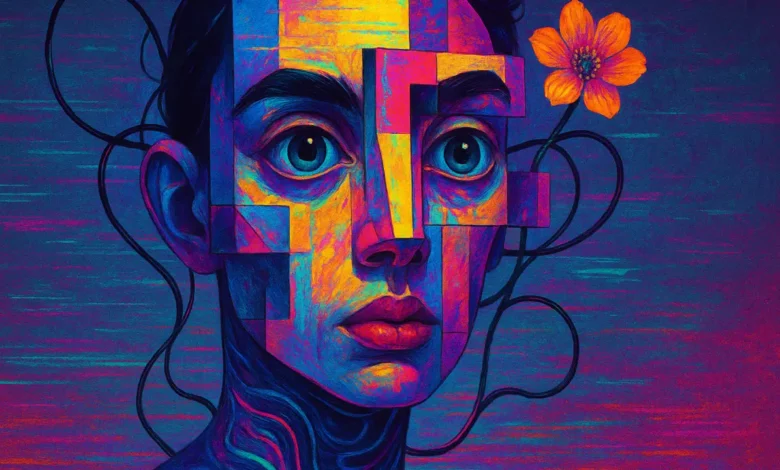Caricatronchi: The Rise of Digital Caricature Art That’s Redefining Identity in the Age of AI

In a world obsessed with filters, virtual avatars, and social media aesthetics, a new digital art movement is turning heads and sparking conversations — Caricatronchi. If you haven’t heard of it yet, you’re not alone. This emerging genre blends traditional caricature with surreal digital techniques to explore identity, distortion, and the modern self in bold, often humorous ways. But Caricatronchi is more than just art — it’s a cultural signal, a branding tool, and perhaps the future of self-expression online. In this in-depth article, we’ll dive into everything you need to know about Caricatronchi — from its origins and meaning to its applications, appeal, and future impact on design, psychology, branding, and the metaverse.
What Is Caricatronchi?
Caricatronchi is a newly coined term derived from the combination of “caricature” and the Italian word “tronchi” — meaning “trunks” or “fragments.” It refers to a digitally manipulated caricature style that exaggerates, distorts, and often fragments the human face or body into surreal, symbolic, or expressive elements.
Unlike traditional caricature, which is typically used for humor or political satire, Caricatronchi leans into emotional surrealism, identity abstraction, and techno-aesthetic distortion. The result? A new wave of digital portraits that are:
- Bold
- Fragmented
- Vibrant
- Deeply personal
These images often appear to belong in a dream — or perhaps a glitchy simulation of one.
The Digital Roots: Caricature Meets AI and Surrealism
To understand Caricatronchi, you need to understand the three forces that birthed it:
- Traditional Caricature: A centuries-old form of art where certain features (like a nose, eyes, or hairstyle) are exaggerated for comedic or dramatic effect.
- Surrealism, popularized by Salvador Dalí and others, breaks the rules of anatomy and reality to reveal hidden psychological truths.
- AI and Digital Art Tools: With platforms like Midjourney, DALL·E, Photoshop Neural Filters, and even apps like Lensa AI or ToonMe, people can now easily generate and manipulate stylized, surreal portraits.
Caricatronchi is where all three converge.
Characteristics of Caricatronchi Art
While every piece may look different, Caricatronchi art generally shares the following visual traits:
- Exaggerated features: Large eyes, elongated necks, or blown-out lips.
- Facial fragmentation: Faces broken into geometric shapes or layered like masks.
- Vivid color palettes: Neon, pastel, and glitchy hues dominate.
- Symbolic elements: Horns, third eyes, wires, flowers, or surreal props.
- Uncanny expression: The subject often appears part-human, part-robotic or avatar-like.
This style makes each Caricatronchi portrait more than a funny image — it becomes a psycho-digital statement about identity in a hyperconnected world.
Who Is Creating Caricatronchi Art?
The movement is being championed by digital artists, illustrators, and AI hobbyists across platforms like:
- Behance
- DeviantArt
- ArtStation
- Reddit (r/GlitchArt, r/AIArt)
Some artists focus on humorous exaggeration. Others lean into emotional storytelling. Many use it as a form of digital self-exploration, capturing not just how someone looks but also how they feel inside.
Others are using AI-assisted software, feeding their selfies or drawings into tools that produce stylized versions, then layering textures or adjusting features to create something entirely original.
Why Is Caricatronchi Gaining Popularity?
Let’s explore some of the significant reasons this style is gaining traction in 2025 and beyond:
Digital Identity Crisis
In an era of avatars, virtual meetings, and online branding, people are exploring identity in more fluid ways. Caricatronchi offers a mirror — but not a literal one. Instead, it reflects the inner emotional chaos, the fragmented roles, and the aspirational selves that live within us.
Nostalgia Meets Future Aesthetics
Caricatronchi art often feels like a mix of 90s cartoons, surreal art, and modern glitch design. This creates a retro-futuristic vibe that appeals to Millennials and Gen Z alike.
Customization Culture
From Bitmoji to AI-generated avatars, users crave hyper-personalized digital identities. Caricatronchi lets people create versions of themselves that feel uniquely expressive, strange, or playful.
Art Therapy in the Digital Age
Believe it or not, many find the act of creating or commissioning Caricatronchi art to be emotionally therapeutic. It’s a safe way to exaggerate fears, laugh at insecurities, or embrace one’s “weirdness.”
Common Uses of Caricatronchi
The rise of Caricatronchi isn’t limited to art collectors. It’s being used in a wide range of creative and commercial ways, including:
Social Media Avatars
People are replacing selfies with stylized Caricatronchi portraits on Instagram, Discord, and X. It makes a bold, artistic statement.
Album & Podcast Covers
Musicians and podcasters are using it to stand out and convey emotional or experimental themes.
NFT Collections
Several AI artists are launching Caricatronchi NFT drops, offering surreal portraits as digital collectibles.
Therapeutic & Self-Expression Projects
Mental health coaches and therapists have begun using this style in digital journaling or healing exercises, allowing users to depict how they perceive themselves emotionally.
Marketing & Branding
Brands are experimenting with Caricatronchi in digital campaigns, especially in fashion, gaming, and youth-focused platforms.
How to Create Your Caricatronchi
Interested in trying this art style? Here’s how you can get started:
Manual Digital Illustration
- Use tools like Procreate, Adobe Illustrator, or Clip Studio Paint
- Exaggerate key features (forehead, eyes, mouth)
- Fragment the face using shapes or texture brushes
- Add surreal elements like clouds, wires, glitch patterns
AI + Editing Combo
- Upload a selfie to tools like Lensa AI, Midjourney, or Artbreeder
- Choose a surreal or cartoon-style
- Export the image and layer edits using Photoshop or Canva Pro
- Add symbolic elements like flowers, clocks, or dream-like backgrounds
Prompt-Based AI Generation
- Use text prompts like:
- “A surreal caricature of a man with a cube-shaped head, glowing eyes, and fractal neck — in vibrant pastel glitch style”
Caricatronchi vs. Traditional Caricature: What’s the Difference?
| Feature | Traditional Caricature | Caricatronchi |
|---|---|---|
| Medium | Pencil, ink, watercolor | Digital, AI-enhanced, mixed media |
| Purpose | Humor, satire | Emotional expression, digital identity |
| Realism | Retains some resemblance | Often abstract or fragmented |
| Audience | Editorial, events, political use | Gen Z, online artists, digital creators |
| Use in branding | Minimal | Rapidly increasing in digital-first brands |
What the Future Holds for Caricatronchi
The future looks bright — and surreal. As AI tools improve and the metaverse becomes mainstream, Caricatronchi could evolve into:
- Interactive 3D avatars
- Virtual gallery installations
- Therapeutic tools in digital wellness apps
- Personalized digital ID cards
- Fashion collabs with surreal branding
With the growing importance of visual identity and emotional storytelling, expect Caricatronchi to gain momentum in both artistic and commercial circles.
Final Thoughts
Caricatronchi is more than just exaggerated faces — it’s a reflection of how we see ourselves in the digital mirror. It plays with perception, emotion, and identity in a world where pixels, platforms, and psychological nuance shape self-image.
You May Also Read: Artofzio: Redefining Digital Art and Creative Expression




